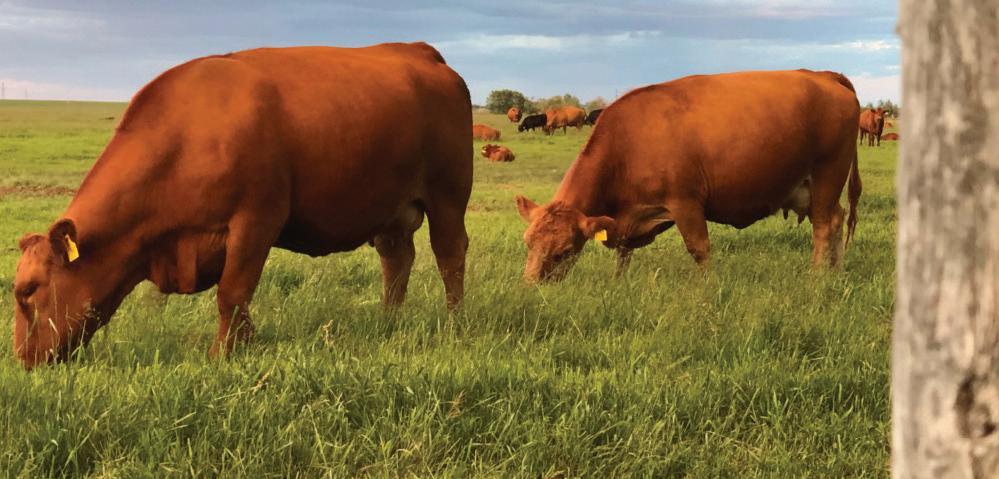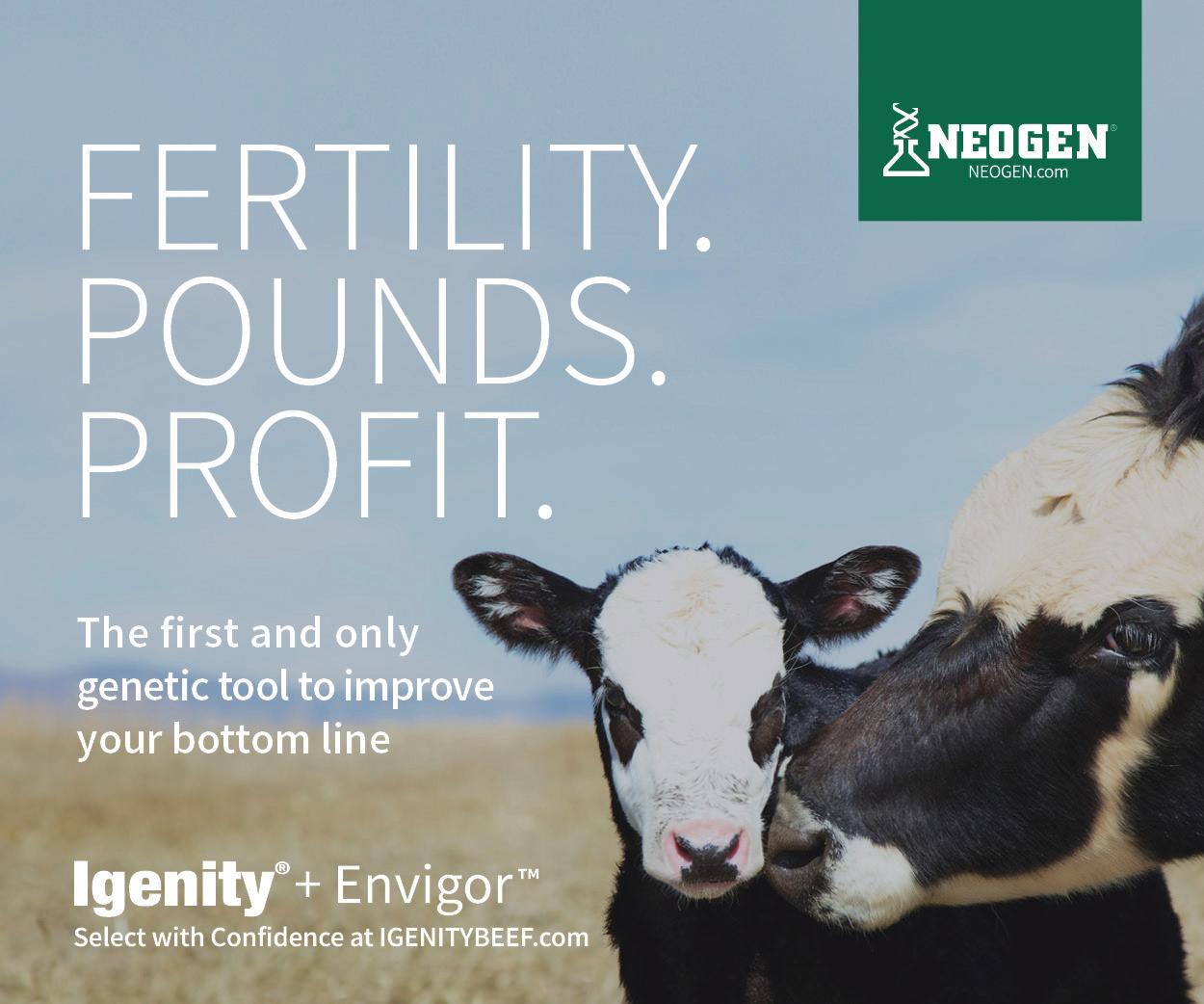
3 minute read
Genomics, Drive Change From the Female Side
Producing in the beef industry in 2023 is different than ever before. There is the traditional, romantic aspect of the lifestyle, but decisions are no longer made based solely on tradition. Science and technology usage drives decisions. If you are a seedstock breeder selling bulls into the commercial market, your primary role is to drive profit in the commercial sector. This is done by developing and promoting key economically relevant traits such as feed efficiency, maternal traits or carcass traits. This is where genomic testing plays a vital role. Through data and science, we can select genetics that fit our environment and are more efficient than traditions could have ever dreamed. Responsible investing and implementing genomic testing within a seedstock herd is an investment in the future of an operation. It is risk management.
Genomic testing immediately increases a prediction’s accuracy. This not only means increased confidence in the bulls a commercial customer buys, but it means bulls and females retained on a seedstock operation are bred and managed for optimum genetic gain. Producers unfortunately do not see the effects of a single year’s breeding decision until three years or more after the decision is made. This slow turnaround makes accurate decision-making of utmost importance and equates to faster genetic gain. As mentioned, genomic testing provides faster capabilities to make accurate decisions on yearling bulls and replacements. Therefore, “new” genetics get turned over at a rapid rate, resulting in an increase in the breed average.
So what about the other half of the equation? The female genetics, if you are a seedstock producer selling bulls into the commercial market, why would you invest the time, money and energy into collecting data and genotyping those animals? The reasons and benefits or genomically testing your bulls are equally applicable to the females in your program. By testing replacement heifers or young cows you will learn more about the inherited genes they have and will pass along to their progeny or your future sale bulls. When you run the GGP-100k through the Canadian Gelbvieh Association you will receive the genomically enhanced expected progeny differences (gEPDs). This gives greater accuracy of the results over the traditional expected progeny differences (EPDs). As a result, the value of female gEDPs is not only to the breeder but benefits the breed and breed progress. Therefore, associations are organizing female testing programs to drive the other half of the equation.
A more robust female genomic reference population bolsters the entire herd book. It means that the evaluations become more accurate with more recorded genotypes, it means pedigrees become more accurate as parentage verification becomes easier. As well, more female genotypes opens the door for trait discovery and research, it also allows for projects to easily be coordinated for marketing of the breed with data, and lastly you as a breeder are able to make breeding decisions earlier in that animals life to help make breed and herd progress.
One of the easiest ways to make sure you are taking advantage of a female program is sampling any female animal that is destined for the breed herd book or to be registered. This ensures that when the registration is submitted the DNA test can also be submitted to get back the results in a timely fashion to make breeding decisions with that young female. The fastest, most efficient way to take that DNA sample on a young animal is to use a tissue sampling unit (TSU) made by Allflex®.
Using a TSU captures a high-quality DNA sample with ease. These samples can be taken on young calves as soon as they are dry or at the same time as tagging, this self-contained sample is inserted into a modified tagger and taken with an easy squeeze of the handles. Samples can then be stored in a dark, cool room until they are ready for testing at the lab. The most essential part of sampling in the accuracy and quality of the sample and the record of the animal to each sample, so ensure you are using the individual number on each TSU to record each animal.
Sampling your females as a seedstock producer is crucial to maintaining your herd and breed progress, as well as your bottom line. The improvement or capitalization on the traits that your customers are looking for can be achieved faster, and more consistently through genotyping your females that are going to contribute to your herd for many generations. So make sure you are taking advantage of sampling your females and catapulting your genetic progress.








